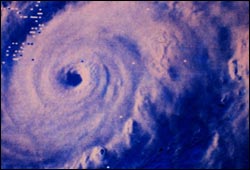Today is the Vernal Equinox
 Happy New Year!
Happy New Year!No I'm not off by a few months. I've always thought that ancient humans missed the boat when they designated the first day of the year to be in the middle of winter.
Of course the idea was that the Winter Solstice marks the time of the year when the sunlight returns in the Northern Hemisphere, quite literally north of the Arctic Circle. From that day onward, the days get longer and longer.
But today is the Vernal Equinox. The day when day and night are equal. The symbolic return of life. Spring brings the buds of trees and flowers, the green grass, the warm days and cool nights. I always thought that the Vernal Equinox, the symbolic return of life was a more fitting day to mark the start of a new year.
Many cultures throughout ancient times made close and very accurate observations of the movement of the Sun and stars.
For many cultures throughout history, people got ready to start tilling the fields. Ancient peoples may not have understood orbital mechanics, but they were tireless observers of the Sun, stars and planets and noted with enviable precision how the position of the sunrise shifted on the horizon throughout the year. By tracking solar motions, they kept track of time and could estimate with some security when the last frost had passed and it was safe to plant crops.
“It seems wonderfully appropriate that you would anchor the timing of your planting season directly to the source of it,” said Dr. Paul Doherty, a physicist and senior staff scientist at the Exploratorium museum in San Francisco.
Archaeological evidence abounds that astronomy is among the oldest of professions, and that people attended with particular zeal to the equinoxes and the solstices. The Great Sphinx of Egypt, for example, built some 4,500 years ago, is positioned to face toward the rising sun on the vernal equinox.So ... Welcome to Spring 2007. We've traveled a long distance in one year. A full trip around the Sun at ~67,000 MPH as we ride off into the sunset once again.
In the 1,500-year-old Mayan city of Chichén Itzá, in Mexico’s Yucatán peninsula, the magnificent Kukulcán Pyramid practically slithers to life each spring equinox evening, as the waning sun casts a shadow along its steps of seven perfectly symmetrical isosceles triangles, a pattern suggesting the diamondback skin of a snake.
In the West, the equinox is intimately fastened to the holiest of Christian holidays: Easter is timed to occur the first Sunday after the first full moon that follows the vernal equinox. “One of the main motivations for having astronomers working at the Vatican,” Dr. Hawkins said, “is that they wanted to know the precise date for Easter each year.”



0 Comments:
Post a Comment
Subscribe to Post Comments [Atom]
<< Home